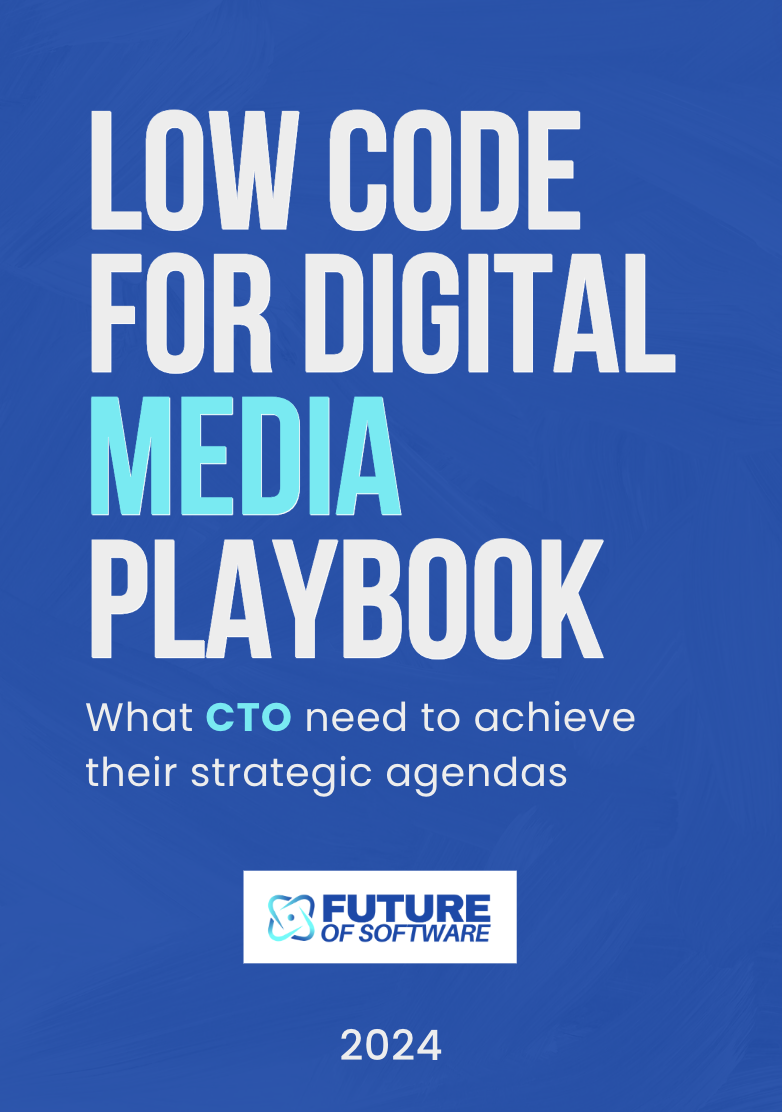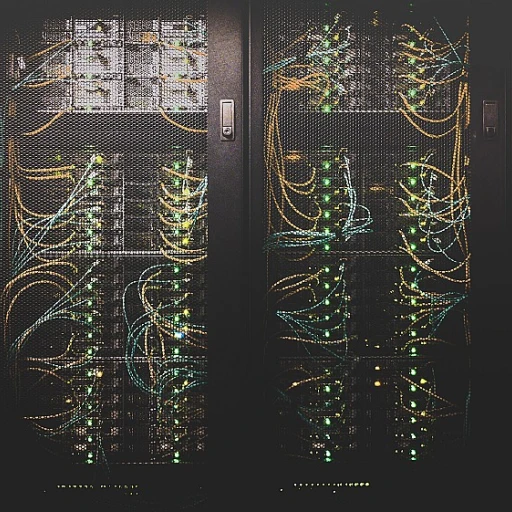
Emerging Software Trends
Unveiling the Future of Software at HICSS
The Hawaii International Conference on System Sciences (HICSS) has long been a beacon for those eager to explore the cutting-edge of software innovation. As we delve into the emerging software trends, it's essential to recognize the conference's role in shaping the future of technology. Each year, the HICSS conference system brings together a diverse consortium of experts, researchers, and practitioners who present papers and participate in symposia, workshops, and tutorials.
One of the most anticipated aspects of HICSS is its focus on emerging software trends. These trends are not just theoretical; they are practical applications that influence how we interact with technology daily. The conference sessions often highlight how these innovations are being implemented across various sectors, from healthcare to finance, and even in our personal lives.
As we look at the trends discussed at HICSS, several key areas stand out:
- Artificial Intelligence and Machine Learning: These technologies continue to revolutionize software development, offering new ways to automate processes and enhance decision-making. The HICSS sessions often delve into how AI and ML are being integrated into existing systems to improve efficiency and accuracy.
- Cybersecurity Challenges: With the rise of digital transformation, cybersecurity remains a critical concern. The conference provides a platform for discussing innovative solutions to protect data and systems from evolving threats.
- Quantum Computing: Although still in its nascent stages, quantum computing promises to redefine computational capabilities. HICSS explores how this technology could impact software development and system sciences in the coming years.
- Sustainable Software Practices: As environmental concerns grow, the software industry is increasingly focused on sustainability. The conference highlights practices that reduce energy consumption and promote eco-friendly development.
- Collaborative Innovation: The HICSS mini tracks and workshops emphasize the importance of collaboration in driving innovation. By bringing together diverse perspectives, the conference fosters an environment where groundbreaking ideas can flourish.
The HICSS conference, held annually at the Hyatt Regency in Hawaii, serves as a hub for these discussions. With deadlines for paper submission and final manuscript preparation approaching in August and September, participants are keen to share their insights and contribute to the evolving landscape of software innovation. The HICSS website provides detailed information on the conference schedule, including notification dates and minitrack chairs, ensuring that attendees are well-prepared for this international gathering.
Artificial Intelligence and Machine Learning
AI and Machine Learning: Transforming the Software Landscape
Artificial Intelligence (AI) and Machine Learning (ML) are no longer just buzzwords; they are pivotal in shaping the future of software development. At the HICSS conference, these technologies are at the forefront of discussions, with numerous sessions dedicated to exploring their potential and challenges. As software systems become more complex, AI and ML offer innovative solutions to enhance efficiency and functionality.
AI and ML are being integrated into various applications, from enhancing user experiences to automating complex processes. The international conference in Hawaii provides a platform for experts to present papers and engage in workshops and symposia that delve into these advancements. The conference system is designed to facilitate collaboration and innovation, with mini tracks and tutorials that focus on practical applications and theoretical advancements.
The impact of AI and ML is evident in the way software systems are being developed and deployed. The HICSS conference highlights how these technologies are being used to address cybersecurity challenges, another key topic of discussion. By leveraging AI, developers can create more secure systems that can detect and respond to threats in real-time.
Moreover, the rise of AI and ML is closely linked to the emergence of quantum computing, which promises to revolutionize the way we process information. As discussed in other sections of the conference, the integration of these technologies could lead to unprecedented levels of computational power and efficiency.
For those interested in the latest innovations, the HICSS website provides detailed information on paper submissions, deadlines, and the schedule of sessions. The conference, held at the Hyatt Regency, offers a unique opportunity to engage with leading experts and explore the future of software development.
Cybersecurity Challenges
Addressing Cybersecurity in a Rapidly Evolving Landscape
As the digital world expands, cybersecurity remains a critical concern, especially in the context of emerging technologies discussed at the HICSS conference. The integration of artificial intelligence and machine learning into software systems has opened new avenues for innovation, but it also presents unique challenges in safeguarding sensitive data.
The HICSS conference, held annually in Hawaii, serves as a platform for international experts to explore these challenges. With a focus on system sciences, the event includes a variety of sessions, workshops, and symposia that delve into the complexities of cybersecurity. These discussions are crucial as organizations face increasing threats from cyber attacks, necessitating robust defenses.
One of the key highlights at the conference is the exploration of how AI can be leveraged to enhance cybersecurity measures. AI-driven systems can detect anomalies and potential threats in real-time, offering a proactive approach to security. However, this also raises concerns about the ethical use of AI and the potential for misuse.
Participants at the HICSS conference, including those attending the doctoral consortium and mini track sessions, are encouraged to submit papers that address these issues. The deadline for paper submission is typically in August, with notifications sent out in September. These papers contribute to the broader understanding of how to effectively integrate cybersecurity into the development of new technologies.
Moreover, the conference system at HICSS provides a collaborative environment where researchers and practitioners can share insights and strategies. This collaboration is essential for developing innovative solutions that can keep pace with the rapid advancements in technology.
In conclusion, the cybersecurity challenges discussed at the HICSS conference highlight the need for continuous innovation and collaboration. As we look to the future of software, it is imperative that we address these challenges head-on, ensuring that new technologies are both innovative and secure.
The Rise of Quantum Computing
The Quantum Leap in Computing
The HICSS conference has always been a beacon for cutting-edge discussions, and this year, the spotlight is on quantum computing. As the world stands on the brink of a quantum revolution, the implications for software development are profound. Quantum computing promises to solve complex problems much faster than classical computers, opening new avenues for innovation.
At the Hawaii International Conference on System Sciences, experts are delving into how quantum computing can transform various sectors. The sessions, workshops, and symposia are filled with discussions on how quantum algorithms can optimize everything from logistics to pharmaceuticals. The potential for breakthroughs is immense, and the conference system is buzzing with excitement.
However, the transition to quantum computing is not without challenges. The need for new software paradigms is evident, and developers must adapt to a fundamentally different way of thinking. The HICSS tutorials and mini tracks are addressing these challenges, offering insights into the development of quantum-ready applications.
As the deadline for paper submissions approaches, researchers are eager to present their findings. The final manuscript submissions will likely include groundbreaking work on quantum algorithms and their applications. The HICSS website is a hub for these innovations, providing access to a wealth of knowledge and resources.
With the Hyatt Regency hosting this international gathering, the atmosphere is one of collaboration and discovery. The doctoral consortium and mini track sessions are particularly noteworthy, as they bring together the brightest minds in system sciences to explore the future of computing. As we look to the future, the role of quantum computing in shaping the software landscape cannot be overstated.
Sustainable Software Practices
Green Software: A Path to Sustainability
As the world becomes increasingly aware of environmental issues, the software industry is not exempt from the call for sustainable practices. The HICSS conference, held annually in Hawaii, has become a pivotal platform for discussing how software development can align with global sustainability goals. This year's sessions and workshops highlighted several key areas where software can contribute to a greener future.
One of the primary discussions at the conference focused on the energy consumption of data centers and the software systems that run them. With the rise of cloud computing, the demand for energy-efficient software has never been higher. Papers presented at the conference explored innovative ways to reduce the carbon footprint of these systems, emphasizing the importance of optimizing code and utilizing renewable energy sources.
Another significant topic was the development of software that supports sustainable practices in other industries. For instance, applications that help track and reduce waste in manufacturing processes or systems that optimize energy usage in smart buildings. These innovations not only contribute to environmental conservation but also offer economic benefits, making them attractive to businesses worldwide.
The conference also featured a mini track dedicated to the role of artificial intelligence in promoting sustainability. AI-driven solutions can analyze vast amounts of data to identify patterns and suggest improvements in energy efficiency and resource management. This intersection of AI and sustainability is a burgeoning field, with many researchers and developers eager to explore its potential.
Collaborative innovation was another theme that resonated throughout the HICSS conference. The international consortium of scientists and developers emphasized the need for cross-disciplinary approaches to tackle sustainability challenges. By bringing together experts from various fields, the conference fostered an environment where innovative ideas could flourish, paving the way for sustainable software practices that are both effective and scalable.
As the deadline for paper submissions approaches, the HICSS website continues to be a hub for those interested in contributing to this vital conversation. With the final manuscript deadline in August and notifications in September, the anticipation for next year's conference is already building. The Hyatt Regency in Hawaii will once again host this gathering of minds, where the future of sustainable software will undoubtedly be a key focus.
Collaborative Innovation
Fostering Collaborative Innovation in Software Development
At the heart of the HICSS conference, collaboration emerges as a pivotal theme, driving innovation across various domains of software development. The conference system is designed to bring together international experts, fostering a vibrant exchange of ideas through symposia, workshops, and tutorials. This collaborative environment is crucial for addressing complex challenges in software, such as those discussed in cybersecurity and quantum computing.
The Hawaii International Conference on System Sciences (HICSS) provides a unique platform for researchers and practitioners to engage in meaningful dialogue. The sessions, including mini tracks and symposia workshops, are meticulously curated by minitrack chairs to ensure a diverse range of topics and perspectives. This diversity is essential for sparking new ideas and fostering innovation.
One of the key aspects of collaboration at HICSS is the doctoral consortium, which offers emerging scholars the opportunity to present their papers and receive feedback from seasoned experts. This interaction not only enhances the quality of research but also encourages the development of sustainable software practices, as discussed in earlier sections.
Moreover, the HICSS website serves as a comprehensive resource for participants, providing information on paper submission deadlines, final manuscript requirements, and notification dates. The deadline in August and notification in September are critical milestones for participants, ensuring a well-organized and timely conference experience.
The conference, held at the Hyatt Regency in Hawaii, also emphasizes the importance of international collaboration. By bringing together participants from around the world, HICSS facilitates the exchange of diverse ideas and approaches, which is essential for tackling the multifaceted challenges of software development.
In conclusion, the collaborative spirit of the HICSS conference not only advances the field of software development but also inspires participants to explore new frontiers in innovation. By fostering an environment of shared knowledge and expertise, HICSS plays a crucial role in shaping the future of software.





-large-teaser.webp)








